We all know Japan as a land full of mystery, and Kanmangafuchi Abyss in Nikko is definitely a place full of secrets. Is it because of the furious river running down the place? Because of the eerie whistle coming from the neighboring woods? Or because the stone Jizos have a ghostly nature of their own?
The first time I went to Japan, I looked up places to visit in Nikko and my attention was immediately drawn to Kanmangafuchi Abyss. I have always been interested in mysteries and somehow naturally attracted to places with a mystical aura. The alignment of Jizo buddhas at the abyss seemed eerie and therefore, worth a look with my own eyes.
A first encounter with the Jizo statues of Kanmangafuchi
When I first traveled to Nikko, it was on a very hot day in the middle of July. The air was damp, and it’s a euphemism to say I was sweaty, especially after hiking around for hours. But my determination to make my day trip out of Tokyo worthwhile gave me enough energy to walk dozens of kilometers. I was younger too back then. The Kanmangafuchi Abyss was the last site I wanted to check out after the famous Toshogu and Futarasan shrines.
I had to cross a silent tow and walk along the river to reach the “abyss”. The place was named this way because of the strength and depths of the waters, where the Daiya river joins the Tamozawa river. The lava rocks were eroded there into a deep gorge, where the waters meet in a loud roaring sound.
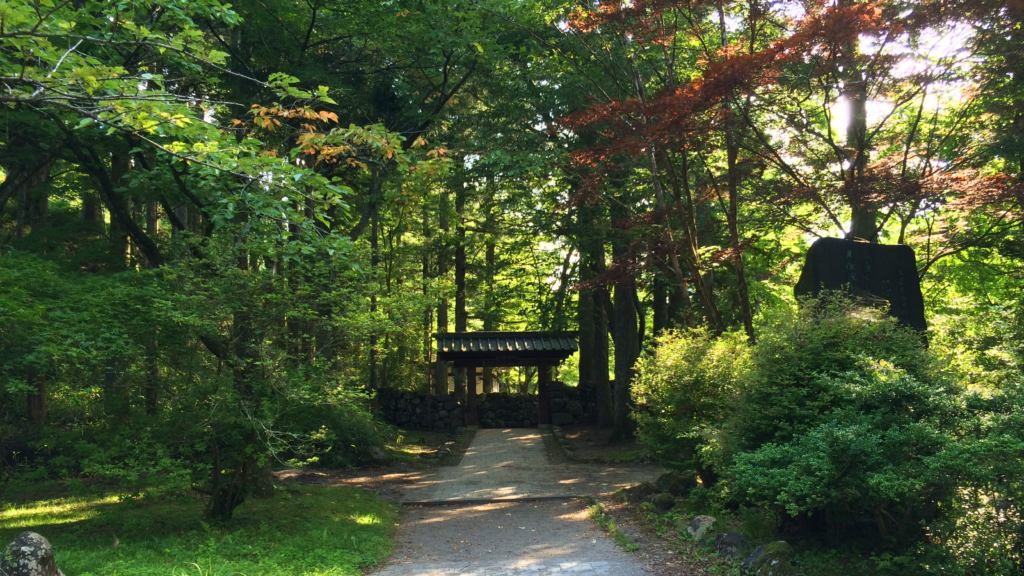
Upon entering the site, there’s only a humble wooden gate flanked with Japanese maple trees. It’s very silent, except for a few chirping birds hiding in the forest, and I’m alone there. Although not too far from the most touristy landmarks of Nikko, Kanmangafuchi Abyss is not among the main shrines and temples ranked as UNESCO heritage, so it’s usually a quieter place than the rest.
The “ghost” Jizos of Kanmangafuchi Abyss
I walk through the gate and can suddenly hear the sound of the river running loudly. Almost immediately, a small shrine in the shape of a seemingly abandoned kiosk appears, overlooking the river. It’s only standing there so one can throw a coin and honor the river. It might be to ask for protection too? Either way, safer to say a little prayer there. Obviously, don’t be a fool and climb down the paths to the river, it’s dangerous and strictly forbidden.
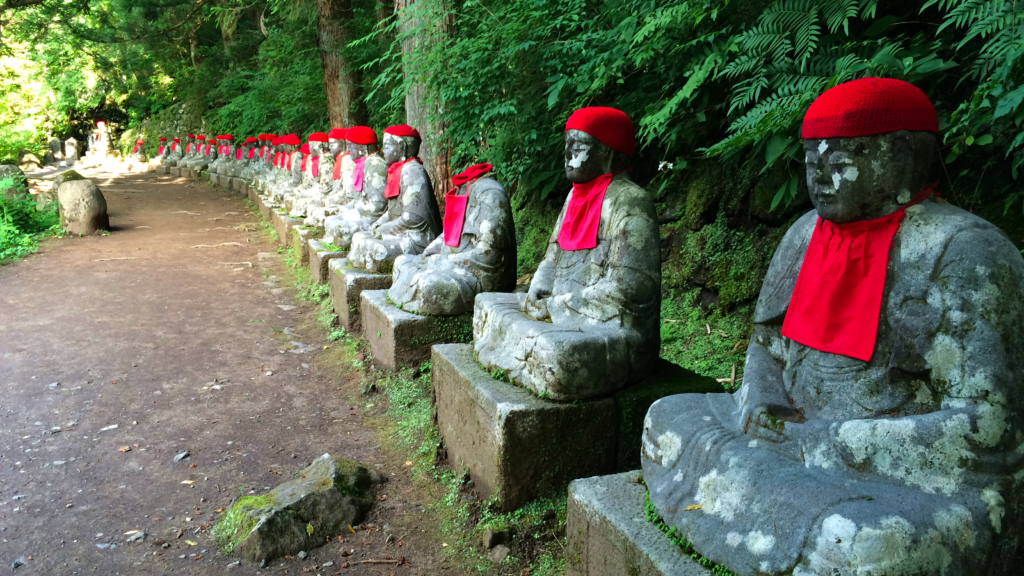
On my left, the statues I’d been longing to see are silently sitting, watching over the river. A strange feeling of familiarity comes onto me. I can’t really explain why or how, but my heart seems to harmonize with the atmosphere of the place, the song of the birds hidden in the trees, the tranquil yet solemn posture of the statues, and the spirit of nature touching all my senses at that moment. If there has to be a magical moment in my trip, that is certainly it.
There’s a legend about the Jizo statues of Kanmangafuchi. Because of their ghostly nature, they’re said to have the power to disappear and reappear. That’s why they’re nicknamed “Bake” Jizo (ghost Jizo). There are about 70 of them along Kanmangafuchi Abyss. But if you try counting them, apparently you’ll never find the same number. I tried and was confused indeed. I’ll let you make your own attempt when you get there.
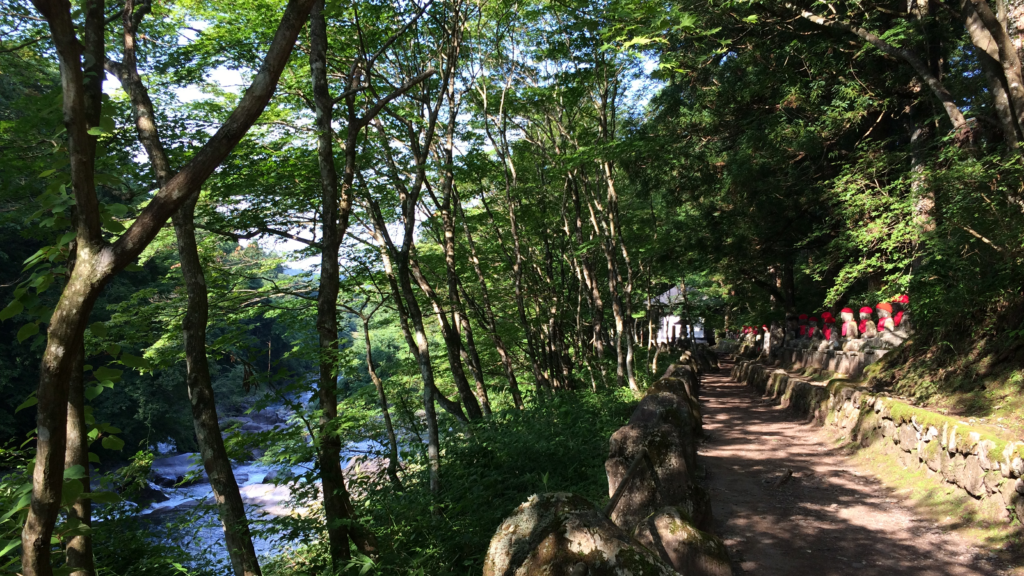
Jizo Buddha, protector of children and travelers
Who is Jizo anyway? He is a representation of Bodhisattva Ksitigarbha. A Bodhisattvas is an enlightened being who has refused to reach Nirvana in order to help humans out. He has made the vow of becoming a Buddha only “when Hell would be empty”, meaning his mission would be completed only when all the souls are saved.
In Japan, he’s called Jizō bosatsu (bodhisattva Jizō), O-Jizō-san or O-Jizō-sama and is mainly the protector of children and travelers. His figure is associated with the souls who cannot “cross” to another world, and because of that, his statues can often be found in places of passage such as roads or crossings. He can also be found in places where the spiritual and profane realms meet, such as graveyards or temples.
Kanmangafuchi Abyss and the Japanese tradition
Jizo is often represented with a child’s face, clothed with red hats and bibs. That’s because he promised to guide the souls of children who died too early to accumulate enough good deeds to be reincarnated. In Japanese mythology, those children are stuck in limbo, where they must build stone towers to get out. However, a demon comes at night to destroy their towers, which prevents them from ever being saved. Jizo protects them against the demon.
That’s the reason why small stone piles can be found near Jizo statues – they are not “cairns”, unlike what we Westerners could be led to believe. They’re actually contributions from parents or bypassers who wish to help the children, as the red clothes. You will find many of the piles at the foot of the statues in Kanmangafuchi Abyss, which even adds to the legendary nature of the place.
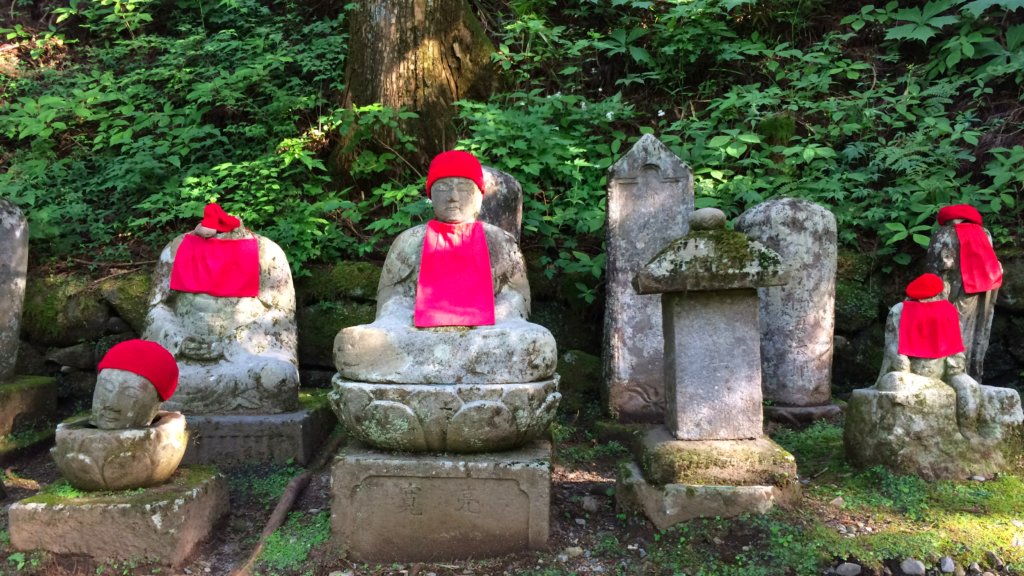
Visit Kanmangafuchi Abyss in Nikko: practical information
How to go?
Take a train to the JR or Tobu Nikko stations. A day trip from Tokyo is possible. From there, take the Tobu bus bound for Chuzenjiko Onsen or Yumoto Onsen and get off at the Tamozawa bus stop. From the bus stop, walk 10-15 minutes through the village.
Another way to reach Kanmangafuchi Abyss is on foot from Toshogu Shrine/Futarasan Shrine: it’s about a 30-min walk.
When to go?
Spring and autumn are the best seasons to visit the Kanmangafuchi Abyss because it won’t be too hot and the trees will be either tenderly green or beautifully orange. The Japanese maple trees are crazily beautiful in autumn, of course.
How to get around?
The transport network is well developed in Nikko, since it’s a major touristic site. For complete information and maps, Japan Guide’s page is a useful resource.
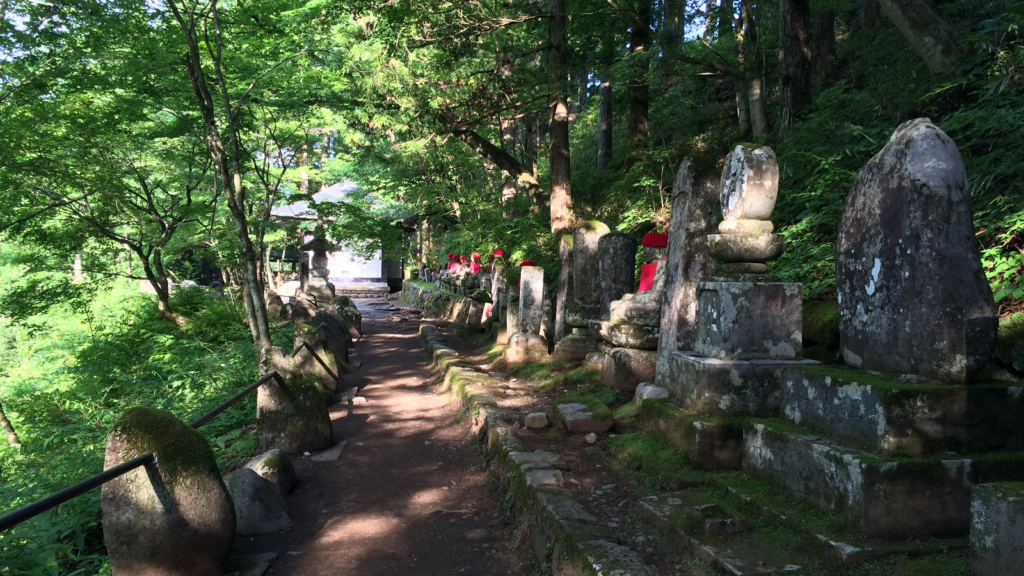
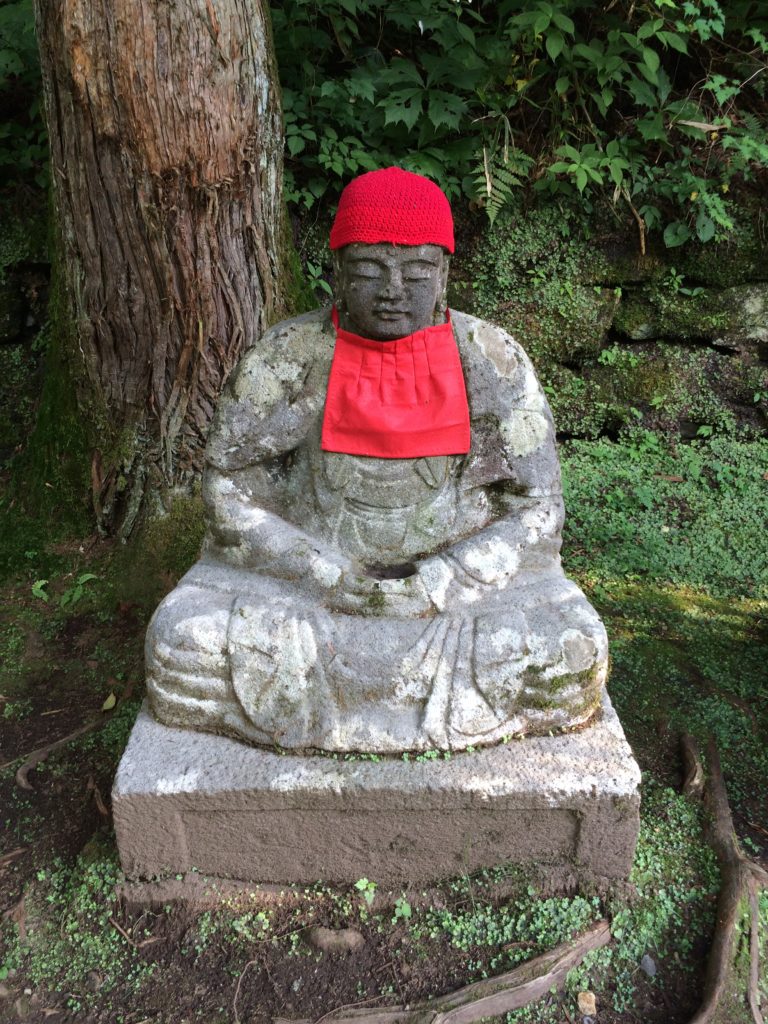
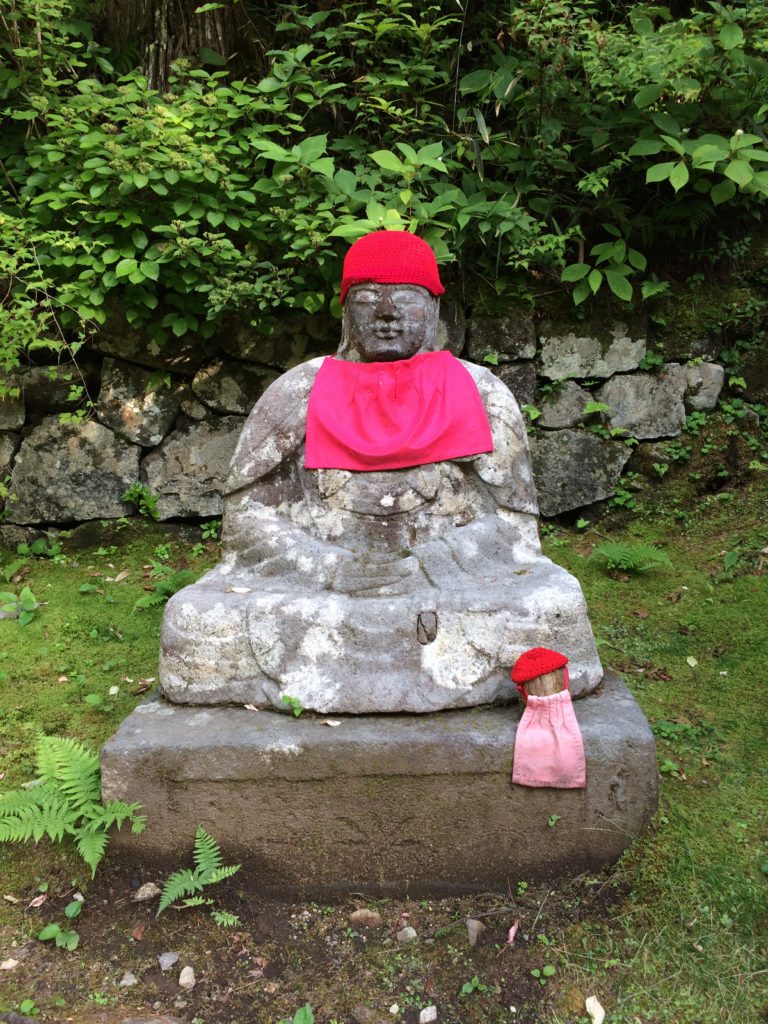
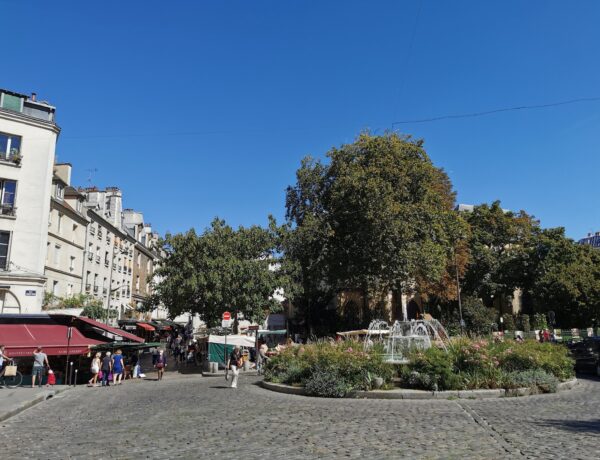
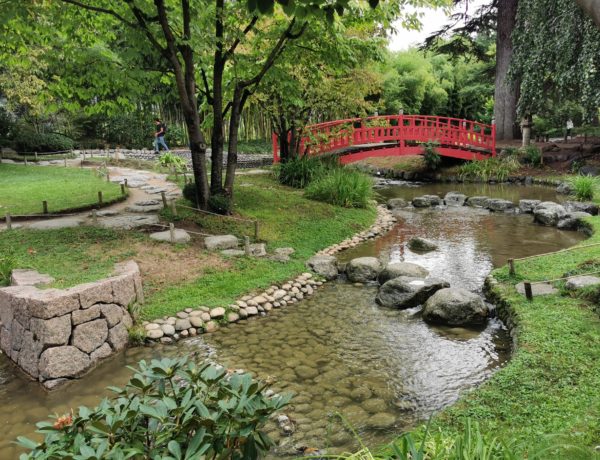

1 Comment
9 Interesting Facts About Nikko - Reeves Roam
9 November 2023 at 12:29 pm[…] SOURCE: A Fab Journey […]